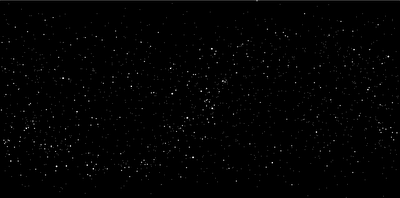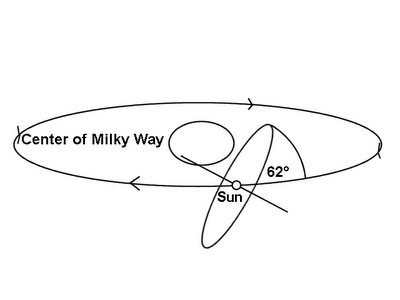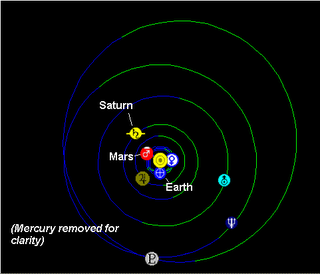It seems that whenever someone gets a new telescope or pair of binoculars, the first thing they want to do is look at the Moon. Many has been the time that I've heard some people say "why don't we wait until it's a full Moon so we can see all of it?" Sounds simple enough... it is a "full" Moon, right? However, that's really not the best time to observe the Moon at all.
Let's talk a little about our planet's one natural satellite. The Moon is pretty big when compared with Earth, a little over 1/4 its diameter (2160 miles/3476 km for the Moon, 7926 miles/12756 km for the Earth). In a very real sense, this makes the Earth/Moon system a double planet; when you compare other planets and their satellites, you find that they are much, much smaller, with Pluto being the one notable exception (and a subject for another day). Our Moon sits at around 238,000 miles/383,000 km from our humble abode, making it by far the closest of our celestial neighbors. At that distance, the Moon covers less than 1° of sky, less than your pinky finger held at arm's length. It seems bigger, but that's just a trick of the eye and mind. Ironically, the Sun also covers roughly the same area. By an incredible coincidence, both the Moon and Sun appear nearly the same size in our skies!
Geologically, the Moon appears to be dead, but it is covered with reminders of our Solar System's violent past; thousands of craters. Amazingly, though, it still gets hit from time to time. As recently as the 1st of May, 2006, astronomers using video equipment caught an impact as it occurred. There are other lunar facts that everyone should be familiar with, such as the fact that the Moon has almost no atmosphere and around 1/6 Earth gravity. It's also naturally a very dark color, almost the color of asphalt; its brilliance comes from reflected sunlight.
Now that we've covered the basics, let's talk about the best time to observe. As I mentioned earlier, many people are tempted to look at a full Moon. While this is fine, the video image below shows pretty much what you can expect to see.
The problem with viewing the full Moon has to do with a lack of contrast. Since the Sun is pretty much straight up from the Moon, there are few shadows being cast. It's still interesting, just not very revealing. The best time to view the Moon are the phases leading up to the full Moon, and in particular the smallest ones, the crescent and quarter phases. The phase between quarter and full, gibbous, is good for some observing as well. The following low resolution video images were made on the 24th June, 2004 and show the northern and southern sections.
As you can see, there is a lot of detail, and the craters and various bumps and gouges really stand out. The next image was taken on the 22nd of September, 2004. This is a close-up of an almost first quarter Moon. During this phase, the large maria (literally "seas") become visible. These huge, dark plains are actually enormous basins filled with ancient lava that has hardened into a basalt. The best time to observe the maria are quarter and gibbous.
In this image, which is tilted 45° to the right, the predominant features are Mare Serenitatis, the Sea of Serenity (upper center), and Mare Tranquillitatus, the Sea of Tranquility (lower center). It was in the Sea of Tranquility that the first Apollo astronauts touched down in July of 1969.
After the first quarter Moon, the phases get progressively brighter until they reach full. Then, the phases go in reverse, from gibbous to quarter and then to crescent and back to new. Of course, most of these post-full Moon phases occur pretty late and go well into the morning hours.
Whenever you plan to observe the Moon, though, it helps to have a good guide. There are plenty of good books out there about observing the Moon. Patrick Moore's classic "The Amateur Astronomer" has plenty of great information. One of the most detailed lunar observing books is "Exploring The Moon Through Binoculars" by Ernest H. Cherrington, Jr. There are some great online sources as well. Draco Productions has a simple online map. A more complex map can be found at Observatorio ARVAL's website.
The Vagabond Astronomer will be outside of Books-A-Million in Mandarin on Wednesday the 28th and Friday the 30th after 8pm both nights. Come on by as we take a long, close up look at our closest cosmic neighbor.
Geologically, the Moon appears to be dead, but it is covered with reminders of our Solar System's violent past; thousands of craters. Amazingly, though, it still gets hit from time to time. As recently as the 1st of May, 2006, astronomers using video equipment caught an impact as it occurred. There are other lunar facts that everyone should be familiar with, such as the fact that the Moon has almost no atmosphere and around 1/6 Earth gravity. It's also naturally a very dark color, almost the color of asphalt; its brilliance comes from reflected sunlight.
Now that we've covered the basics, let's talk about the best time to observe. As I mentioned earlier, many people are tempted to look at a full Moon. While this is fine, the video image below shows pretty much what you can expect to see.
The problem with viewing the full Moon has to do with a lack of contrast. Since the Sun is pretty much straight up from the Moon, there are few shadows being cast. It's still interesting, just not very revealing. The best time to view the Moon are the phases leading up to the full Moon, and in particular the smallest ones, the crescent and quarter phases. The phase between quarter and full, gibbous, is good for some observing as well. The following low resolution video images were made on the 24th June, 2004 and show the northern and southern sections.
As you can see, there is a lot of detail, and the craters and various bumps and gouges really stand out. The next image was taken on the 22nd of September, 2004. This is a close-up of an almost first quarter Moon. During this phase, the large maria (literally "seas") become visible. These huge, dark plains are actually enormous basins filled with ancient lava that has hardened into a basalt. The best time to observe the maria are quarter and gibbous.
In this image, which is tilted 45° to the right, the predominant features are Mare Serenitatis, the Sea of Serenity (upper center), and Mare Tranquillitatus, the Sea of Tranquility (lower center). It was in the Sea of Tranquility that the first Apollo astronauts touched down in July of 1969.
After the first quarter Moon, the phases get progressively brighter until they reach full. Then, the phases go in reverse, from gibbous to quarter and then to crescent and back to new. Of course, most of these post-full Moon phases occur pretty late and go well into the morning hours.
Whenever you plan to observe the Moon, though, it helps to have a good guide. There are plenty of good books out there about observing the Moon. Patrick Moore's classic "The Amateur Astronomer" has plenty of great information. One of the most detailed lunar observing books is "Exploring The Moon Through Binoculars" by Ernest H. Cherrington, Jr. There are some great online sources as well. Draco Productions has a simple online map. A more complex map can be found at Observatorio ARVAL's website.
The Vagabond Astronomer will be outside of Books-A-Million in Mandarin on Wednesday the 28th and Friday the 30th after 8pm both nights. Come on by as we take a long, close up look at our closest cosmic neighbor.








